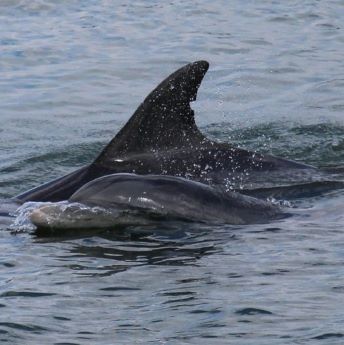Last updated: March 15, 2023
Lesson Plan
Food Chains

- Grade Level:
- Upper Elementary: Third Grade through Fifth Grade
- Subject:
- Science
- Lesson Duration:
- 60 Minutes
- State Standards:
- Next Generation FLORIDA SUNSHINE STATE STANDARDS
LA.4.1.6.1
SC.4.L.17
LA.5.1.6.1
SC.5.L.17
LA.6.1.6.1
SC.6.L.14
NS.K-4.3
NS.K-4.6
NS.5-8.3 - Thinking Skills:
- Understanding: Understand the main idea of material heard, viewed, or read. Interpret or summarize the ideas in own words. Analyzing: Break down a concept or idea into parts and show the relationships among the parts.
Essential Question
Why are food chains important in an ecosystem?
Objective
The student will be able to define common terms used in the study of ecosystems and compare/contrast characteristics of the natural environment in Fort Matanzas with the environment in which they live.
Background
A food chain shows the feeding relationship between different living species in a particular environment or habitat. In other words, it is the transfer of energy from one species to another as every living thing on this planet requires energy in one or other form for their growth and health. Organisms that make their own food are called producers. Creatures that eat other living organisms are called consumers. Organisms that consume dead plants and animals are called decomposers. Plants are producers as they produce energy by using sunlight and other creatures consume them directly or indirectly.
Preparation
Discover the 300 acres of natural habitats at Fort Matanzas National Monument. Working together, the maritime forest, the dune, scrub, and salt marsh ecosystems are able to provide food and shelter for a myriad variety of plants and animals.
Consider scheduling a Distance Learning Opportunity or Field Trip to Fort Matanzas.
Lesson Hook/Preview
Pose questions to the students, "Why are food chains important in an ecosystem?"
Watch the Fort Matanzas music video, The Many Faces of Fort Matanzas (3 minutes, 46 seconds).
Watch the Fort Matanzas video, Florida Coastal Environment (3 minutes, 36 seconds).
Procedure
Step 1: Schedule a Distance Learning Opportunity or Field Trip to Fort Matanzas.
Step 2: Plan instruction around the vocabulary and a discussion on why the food chain is important.
Step 3: Provide the students with images of different plants and animals (e.g., zooplankton, phytoplankton, seaweed, shrimp, crab, squid, fish, pelican, egret, dolphin, whale, etc.) that are local to their area. Starting from the sun and ending with a top predator, ask the students to assemble 5 of the images in the food chain order.
Step 4: Assign students to explore the Animals and Plants of Fort Matanzas and choose a plant or an animal. Students should describe in 3-5 sentences how what they chose, fits into the food chain. Is it a predator, prey, a consumer, a producer, etc.? Pair students up to compare/contrast their animal or plant and its ranking in the food chain.
Vocabulary
- Food chain or food web is the sequence of describing how different living creatures depend on each other (or in simple words, it's how animals eat each other). A food chain diagram shows how energy is transferred between organisms.
- Ecosystem is the community and interactions of living and non-living things in an area.
- Organism is a living life form (examples: single-celled life forms, plants, animals, or humans).
- Inter-relationships refers to how organisms relate and interact with each other.
- Producers are plants, like grass, that get energy from the sun by making their own food through photosynthesis.
- Consumers are creatures that eat producers (plants). Primary consumers are herbivores, which means that they only eat plants.
- Decomposers consume dead plants and animals.
- Prey can be creatures that eat only plants (herbivores), eat only meat (carnivores), or eat both plants and meats (omnivores).
- Predators eat prey.
Supports for Struggling Learners
Work with your exceptional student education or special education teachers to modify the lesson to meet the specific needs of your students with different abilities.
Enrichment Activities
Explore full virtual reality tour for Fort Matanzas National Monument.
Related Lessons or Education Materials
-
Discover more education resources for your classroom.
-
Discover fun online activities for kids to experience with their families.
